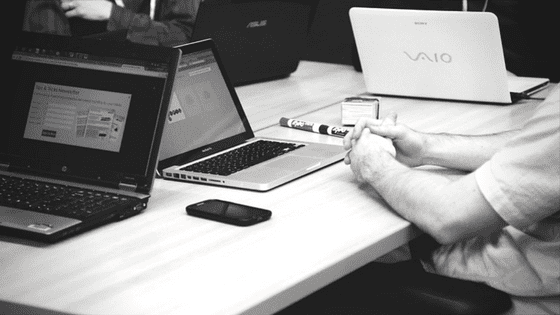Just as many of us have started to become accustomed to working from home, talk has now shifted to an exit strategy. During all of this uncertainty, for the business owner or leader, it can be a challenge to ensure the work is still being delivered effectively, whilst also ensuring you meet your responsibilities in terms of team safety and wellbeing.

A recent US survey found that about half of businesses expect a dip in productivity during the pandemic due to a lack of remote work capabilities. This is hardly surprising, when teams are adjusting to new ways of working, in some cases, juggling with home schooling or the distractions of being around family members or housemates, and sometimes facing technological challenges such as slower internet. This doesn’t even take into account the mental impact of the virus – the fog many of us are experiencing in our minds that can affect our concentration – coupled with the temptation of checking the news and social media feeds for the latest updates.
As much as company leaders will want to demonstrate compassion and flexibility at this time, some may be worried about the stability of their own position, or are under pressure from shareholders, the board or other stakeholders to ensure the day-to-day still continues, and that targeted KPIS are met. It’s a doubled-edge sword – ensuring the wellbeing of a team with the responsibility of also ensuring they continue to have a role, and that your organisation is able to generate enough income to pay salaries.
There are some simple tactics to showing strong leadership in uncertain times, which can be introduced, whatever your business size or sector. We all lead differently, but here are some tips to help those who may be navigating these challenging conditions and want to ensure their teams remain productive, whilst also supported:
Firstly, communicate. Teams will be nervous of decisions being made behind their back. They’ll be seeing headlines projecting that 3.4 million people will be out of work and worrying they’re next. Of course, no-one can guarantee a job is safe, but by checking in regularly, they’ll feel more confident that you have their best interests at heart. Be honest and operate an ‘open door’ policy so teams can have one-on-one time and not be beholden to sharing their concerns on a group call.
If people feel in the dark, they’ll fill the gaps with speculation and this can lead to offline gossip and potential reduction in engagement and motivation. Remember, in these circumstances there is no such thing as overcommunication but be prepared to mix it up – don’t enforce a weekly WIP along the same format if it’s not receiving positive results. Ask the teams what type of check ins they prefer, and how often, they’ll appreciate having their opinions sought.
Be as transparent as you can be, be factual and compassionate, and don’t be afraid of repeating important information. Crucially, set the expectation of constructive two-way communication that is inclusive. Don’t make any radical changes at this time that feel like you are trying to be a company you are not – it’s important that your communication reflects the existing office culture – even if the location has moved.
Use technology and data to understand teams and address issues as soon as possible
You need to understand how teams are coping, and – particularly if you are leading larger teams where a regular call is not practical – you need this information to be measurable and up to date. At Teamgage our ‘ready to use’ solution means accurate, timely information can be gathered related to specific criteria – including communication, collaboration, leader support, working remotely and resources. Leaders can then receive a systematic, objective view that they are able to rely on to address any concerns or shortfalls in collaboration with the team
Through their Teamgage dashboard, they can view, for example, if the number of people stating, ’I am still engaged with my work and my team’ is significantly lower in certain areas of the business, and then work with that team to create actions to address this issue immediately.
Given the rapid pace of change, gathering data to make informed, educated decisions relating to specific team activity needs to take place as close to real-time as possible so that teams can remove issues iteratively and adjust to challenges as they arise.
Set appropriate cultural expectations
For many businesses, working between the home and the office isn’t much of a shift. Many companies operate flexible working policies and therefore aren’t in unknown territory when ensuring a culture of trust, empowerment and an understanding of mutual expectations. However, if the pandemic has thrown a company into completely new waters, it’s important to set cultural tone as soon as possible.
Technology has made it easier than ever for us to operate virtually – so continuing practices such as regular video calls, informal check-ins and online updates will create an understanding of what is expected during this time. Consider open sessions online where team members can opt in to work while staying connected which can have a huge impact on morale and the culture of the group. Make it clear that you still expect the work to be done to deadlines, but that you appreciate that some flexibility is needed at this time. There’s no point insisting teams are in front of their computer from 9 till 5 if they’re also making meals for the kids or doing the shop for elderly relatives. It’s about balance, and understanding, and by being compassionate and flexible, you’re likely to see rewards with an engaged and loyal team for the future.
Whatever works for one company won’t necessarily work for another – but we’ve seen teams embrace their new environment by having group ‘knock off drinks’ online, or dress-up mornings, or sharing entertainment and cultural recommendations each week. Finding these kinds of simple and fun outlets for teams to blow off some steam might seem trivial, but it can make a huge difference to stress levels and morale, so be flexible and cultivate cultural initiatives where you find them.
Look for opportunities
There’s no denying that this pandemic has disrupted everyone’s lives, and seen us all facing unprecedented experiences, on a personal and business level. One US Gallup study found that the percentage of full-time employees who say COVID-19 has disrupted their life “a great deal” or “a fair amount” jumped from 58% to 81% between early and late March.
There is no point pretending it’s ‘business as usual’, we have had to adjust, many businesses have had to make tough decisions, and there is still so much unknown. But there’s no harm in considering ways that the pandemic has forced us to be creative and innovate in our working practices. We may be seeing our teams thrive in a world of trust, autonomy and flexibility, and realise there may be benefits in this for the long term. We may also have had to invest in new systems and technology to carry out work, which teams have enthusiastically responded to and have helped them to be more efficient or productive. Even less tangible changes such as the teams ‘coming together’ more on a personal level may have long lasting impacts. In many ways this is a chance for organisations to try new things. Double down on what works, learn from what doesn’t. Most importantly try small and fail small.
What is crucial is for clear, confident leadership to be prioritised, and for processes that empower the team be introduced, that they will adhere to, be open to, and feel positive about. We’ve seen many organisations approaching us at Teamgage looking for a solution that helps them to continue to understand their teams despite this adjustment. Our ‘Ready to Use’ solution allows organisations to quickly and easily discover how their staff are really coping in real time, aligned to specific objectives, and whether they need to address any issues or make improvements.
In Australia, there is already talk about easing restrictions, as the ‘curve flattens’. So we may be back in the office sooner than initially thought. What is important is that the strong, coherent and compassionate leadership practiced during the pandemic continues, in collaboration with teams, when we are all back in the office.



















